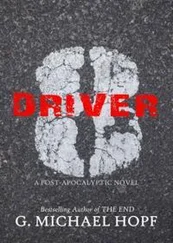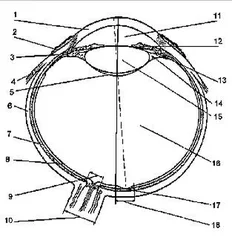State of New Jersey Motor Vehicle Commission - Driver Manual
Здесь есть возможность читать онлайн «State of New Jersey Motor Vehicle Commission - Driver Manual» весь текст электронной книги совершенно бесплатно (целиком полную версию без сокращений). В некоторых случаях можно слушать аудио, скачать через торрент в формате fb2 и присутствует краткое содержание. Жанр: sci_state, Юриспруденция, sci_transport, на английском языке. Описание произведения, (предисловие) а так же отзывы посетителей доступны на портале библиотеки ЛибКат.
- Название:Driver Manual
- Автор:
- Жанр:
- Год:неизвестен
- ISBN:нет данных
- Рейтинг книги:4 / 5. Голосов: 1
-
Избранное:Добавить в избранное
- Отзывы:
-
Ваша оценка:
- 80
- 1
- 2
- 3
- 4
- 5
Driver Manual: краткое содержание, описание и аннотация
Предлагаем к чтению аннотацию, описание, краткое содержание или предисловие (зависит от того, что написал сам автор книги «Driver Manual»). Если вы не нашли необходимую информацию о книге — напишите в комментариях, мы постараемся отыскать её.
Driver Manual — читать онлайн бесплатно полную книгу (весь текст) целиком
Ниже представлен текст книги, разбитый по страницам. Система сохранения места последней прочитанной страницы, позволяет с удобством читать онлайн бесплатно книгу «Driver Manual», без необходимости каждый раз заново искать на чём Вы остановились. Поставьте закладку, и сможете в любой момент перейти на страницу, на которой закончили чтение.
Интервал:
Закладка:
* They keep motorists and passengers from being thrown
* Belts and straps also keep a motorist in position so he/she can control the vehicle
Tips For Seat Belt Use
* Buckle up with both lap and shoulder belts on every trip. (Air bags are supplemental protection devices.)
* Wear the lap belt under the abdomen and low across the hips. The shoulder portion should come over the collarbone, away from the neck, and cross over the breastbone. The shoulder belt in most new vehicles can be adjusted on the side pillar to improve fit.
* Know how to adjust the seat belts and how to release them if motorist’s passengers have to quickly get out of the vehicle.
* Buckle up if riding in the backseat; use center seat belts if those seats are used. Seat belts help prevent riders from falling forward.
* Never put more than one person in one belt.
Car seats
Traffic accidents are a leading killer of children. When riding in a vehicle, children should be held in place by a restraint system that meets all Federal Motor Vehicle Safety Standards. Refer to the paragraph on Child Restraint Law.
All child restraint systems built since January 1, 1981, must be designed to pass tough safety tests. These seats carry a label that gives the date of manufacture and reads: “This child restraint system conforms to all applicable Federal Motor Vehicle Safety Standards.”
There are many types and styles of car seats. An infant car seat will protect a baby up to 20 pounds and 26 inches and must be placed in the vehicle facing the rear. A convertible car seat is a larger seat that can be used for an infant or a toddler of up to 40 pounds and 40 inches in height. The seat can be adjusted to a reclining position and placed in the vehicle facing backwards for a baby. When the baby weighs at least 17 pounds and can sit up well without help, the seat can be adjusted to an upright position and placed in the vehicle facing forward.
Note: It is preferred that whenever possible, child car safety seats be placed in the backseat. However, if a motorist is riding with a new infant and the vehicle does not have a backseat, move the front seat as far back as possible from the dashboard and make sure the child is buckled properly in the appropriate restraint for his/her height and weight. Never place rear-facing infant safety seats in the front seat of a vehicle with a front passenger-side air bag.
While a convertible seat is designed to be used facing forward once a child has reached at least 17 pounds, an infant seat must never be faced forward. To do so would be very dangerous. Always check the label on a car seat to find out the size and weight of the child the seat is designed to protect.
Using the car seat every time a child rides in the vehicle - and using it correctly each time - is very important for the safety of the child. Always read the instructions that come with the seat and follow them very carefully. Correct use of the car seat is the best protection a motorist can offer a child. For more information on child car seats, contact the Division of Highway Traffic Safety at (800) 422-3750 or visit www.njsaferoads.com.
Child Restraint Law
The New Jersey child passenger safety law (N.J.S.A 39:3-76.2a) states:
* Children up to age eight or a weight of 80 pounds must ride in a federally approved safety or booster seat in the rear seat of the vehicle. If there is no rear seat, the child must sit in the front seat secured by a safety or booster seat.
* Children under age eight and over 80 pounds must be in a rear seat and use a seat belt. If there is no rear seat, the child must be properly belted in the front seat.
* Failure to comply with this law could mean a $54 fine and court costs.
Air bags
Air bags are standard equipment in almost all new vehicles and are designed to supplement seat belts in frontal crashes. Federal safety standards required that manufacturers equip all new passenger cars and light trucks with air bags by 1999. According to the National Highway Traffic Safety Administration, statistics show that between 1986 and 2000, front air bags saved the lives of 5,303 front- seat riders.
Air bags inflate at speeds of up to 200 mph to protect adults in a front-end collision. An average-sized adult who is correctly belted is not likely to come in contact with the air bag until it is fully inflated.
When air bags are combined with lap/shoulder seat belts, they have saved many adult lives and prevented many injuries in motor vehicle crashes. However, air bags could seriously injure or kill children who are sitting in the front seat.
In 1995, the National Highway Traffic Safety Administration (NHTSA) allowed cutoff switches in pickup trucks, sports cars and autos with no backseat. In January 1998, it allowed repair shops and dealers to install the switches in vehicles after the appropriate application was made for people in these categories:
* Driver-and passenger-side air bags: For individuals with medical conditions when the risks of a deploying air bag exceed the risks of impacting the steering wheel, dashboard or windshield.
* Driver-side air bags only: For individuals who cannot properly operate the vehicle and keep at least 10 inches between the center of the steering wheel and the center of the breastbone.
* Passenger-side air bags only: For individuals who must place infants in the front seat because the vehicle has no rear seat (e.g., a pickup truck) or the rear seat is too small to hold the child’s rear-facing seat, or the motorist must monitor the child’s medical condition; for individuals who must place children, 1 to 12 years old, in the front seat because the vehicle has no rear seat, or because the individual must transport more children than can be seated in the rear seat, or because the motorist must monitor the child’s medical condition.
For more information about an air bag on-off switch or for an application to request one, call NHTSA’s toll-free Auto Safety Hotline at (800) 424-9393. Information is also available online at www.nhtsa.gov.
Children of any age are safest when they are belted properly in the backseat of a vehicle, especially when the vehicle is equipped with a passenger-side air bag. Other safety points are:
* Always put an infant in a rear-facing infant child safety seat in the back seat of a vehicle with air bags.
* Always be sure that children 12 years old and younger ride in the backseat of the vehicle.
* Always make sure everyone is buckled up.
A motorist can tell if his/her vehicle has an air bag by the words “air bag” or the letters “SRS” (supplemental restraint system) or “SIR” (supplemental inflatable restraint) on the steering wheel and dashboard panel. Manufacturers also may mark the sun visors or the sides of the open door frame with warning labels or enter a warning in the vehicle owner’s manual.
Car condition
A motorist should always check the condition of the vehicle before driving it. If the items below are not working properly, it means the vehicle needs to be repaired.
Backup Lights
When driving in reverse, backup lights should be on. These must be checked to make sure they are in working order.
Note: It is against New Jersey law (N.J.S.A 39:3-52) to have any backup lights on while a vehicle is moving forward.
Brakes
A motorist should be able to brake smoothly and quickly. If the vehicle pulls to one side when it stops or a motorist feels a taut pedal or hears an unusual squealing or grinding, the brakes must be checked. With conventional disc and drum brakes, a motorist should pump them gently after driving through water to test them and dry them out. If the brakes are hit hard, they could lock up. A motorist should be able to stop within 25 feet at 20 mph. This can be tried in an empty parking lot. Chalk marks can be made on the surface to see if the vehicle can stop within that distance.
Читать дальшеИнтервал:
Закладка:
Похожие книги на «Driver Manual»
Представляем Вашему вниманию похожие книги на «Driver Manual» списком для выбора. Мы отобрали схожую по названию и смыслу литературу в надежде предоставить читателям больше вариантов отыскать новые, интересные, ещё непрочитанные произведения.
Обсуждение, отзывы о книге «Driver Manual» и просто собственные мнения читателей. Оставьте ваши комментарии, напишите, что Вы думаете о произведении, его смысле или главных героях. Укажите что конкретно понравилось, а что нет, и почему Вы так считаете.









![Nicholas Timmins - The Five Giants [New Edition] - A Biography of the Welfare State](/books/701739/nicholas-timmins-the-five-giants-new-edition-a-thumb.webp)

